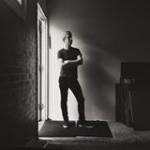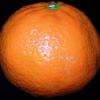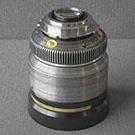-
Posts
613 -
Joined
-
Last visited
Reputation Activity
-
 MattH got a reaction from someguy in Canon interview at Photokina 2014 - 7D Mark II - Magic Lantern - and moire
MattH got a reaction from someguy in Canon interview at Photokina 2014 - 7D Mark II - Magic Lantern - and moire
I think we all know what the deal is. You have said it before, so theres no confusion: Video sucess on dslrs was an accidental success for canon. A nice suprise at the extra interest and sales. So they created the spin off cinima eos lin to carry the pro video forward and charge as much as the market will pay for it. The dslrs then just continue to be 100% stills orientated. The 7d mk1 and mk2 are mainly for sport protographers. Where the crop is an advantage (as long as the sensor is higher resolution) and high frame rate (with good autofocus) is of prime importance. The video is just an added extra. Its just there if they happen to need it. But kept at consumer level quality, with all video improvments like better autofucus squarely in the consumer arena.
-
 MattH got a reaction from Matthew Walsh in Panasonic LX100 first impressions review and 4K footage
MattH got a reaction from Matthew Walsh in Panasonic LX100 first impressions review and 4K footage
If he's left eye dominant then he wont be able to do this, if he is right then he is already, so this is a redundant sugestion. I'm left eye dominant and can literaly not se with my right eye through a veiwfinder unless i completely close my left eye. Which I dont do because my vision is blured for about 5 mins after I open it again.
-
 MattH got a reaction from Nick Hughes in 5D Mark III raw versus Panasonic GH4
MattH got a reaction from Nick Hughes in 5D Mark III raw versus Panasonic GH4
The examples you provide of cinematographers who use deep focus are good ones. Nobody is saying they aren’t great. And no-one is saying that deep focus is not a great look. But to say a cinematographer who uses selective focus is not great because they use it is just strange. I can’t see the basis of the argument. There are plenty of selective focus shots in the godfather, among deep focus. Typically selective focus for the closeups and mid shots and deep focus for the wide shots. Do you think that the godfather has gimmicky cinematography?
What is wrong with the director or dp indicating where the viewer should look with focus?
How is it any different to lighting the scene with different intensities that may attract the eye, or compositional elements that direct the eye, or zoom shots that hone in on a particular element that the director deems relevant?
I take exception to the word gimmick. It seems to come from a place of pomposity, as if you feel that shallow depth of field has somehow less artistic integrity.
If you were to say that you personally prefer deep focus I would have no quarrel, but you are making absolute statements that shallow focus is a gimmick used by non-great dps.
What definition of the word gimmick are you using?
Definitions I have found are:
"a trick or device intended to attract attention, publicity, or trade."
Can the inherent characteristics of an optical system be considered a trick? Apart from when the 5dii first came out, I can’t see it attracting attention in of itself. A film shot with fast primes on a 5d3 might be more appealing to a client than a film shot on a camcorder, but I would argue it is because the image is more visually attractive, not because it is attention grabbing.
Wikipedia describes it:
" a gimmick is a unique or quirky special feature that makes something "stand out" from its contemporaries."
Since everyone is doing shallow depth of field now, how is using it standing out from ones contemporaries. In fact, one could suggest that deep focus achieves this definition more closely. didn’t citizen cane stand out for this reason. Though I would never call deep focus it a gimmick.
Perhaps the word you mean is crutch or substitute. That people use shallow depth of field as a crutch to make up for a lack of other things (although they may be unaware of what is lacking). Probably in many cases with amateur film making this is true. But it doesn’t follow that a great photographer should never use selective focus.
I happen to find that the varying focus through a scene can have a lot of beauty. Let’s not forget that it isn’t a case of either f1.4 or f22. There is a whole range in between. Those that think f8 provides deep focus are mistaken. Even the slightest of background blur is visible and has an effect on the dimensional quality of the image. Even the easy rider example you gave had the background out of focus in certain shots.
I see depth of field as a parameter: too little can be detrimental in certain situations and too much can be detrimental in others.
-
 MattH got a reaction from slothrop in 5D Mark III raw versus Panasonic GH4
MattH got a reaction from slothrop in 5D Mark III raw versus Panasonic GH4
The examples you provide of cinematographers who use deep focus are good ones. Nobody is saying they aren’t great. And no-one is saying that deep focus is not a great look. But to say a cinematographer who uses selective focus is not great because they use it is just strange. I can’t see the basis of the argument. There are plenty of selective focus shots in the godfather, among deep focus. Typically selective focus for the closeups and mid shots and deep focus for the wide shots. Do you think that the godfather has gimmicky cinematography?
What is wrong with the director or dp indicating where the viewer should look with focus?
How is it any different to lighting the scene with different intensities that may attract the eye, or compositional elements that direct the eye, or zoom shots that hone in on a particular element that the director deems relevant?
I take exception to the word gimmick. It seems to come from a place of pomposity, as if you feel that shallow depth of field has somehow less artistic integrity.
If you were to say that you personally prefer deep focus I would have no quarrel, but you are making absolute statements that shallow focus is a gimmick used by non-great dps.
What definition of the word gimmick are you using?
Definitions I have found are:
"a trick or device intended to attract attention, publicity, or trade."
Can the inherent characteristics of an optical system be considered a trick? Apart from when the 5dii first came out, I can’t see it attracting attention in of itself. A film shot with fast primes on a 5d3 might be more appealing to a client than a film shot on a camcorder, but I would argue it is because the image is more visually attractive, not because it is attention grabbing.
Wikipedia describes it:
" a gimmick is a unique or quirky special feature that makes something "stand out" from its contemporaries."
Since everyone is doing shallow depth of field now, how is using it standing out from ones contemporaries. In fact, one could suggest that deep focus achieves this definition more closely. didn’t citizen cane stand out for this reason. Though I would never call deep focus it a gimmick.
Perhaps the word you mean is crutch or substitute. That people use shallow depth of field as a crutch to make up for a lack of other things (although they may be unaware of what is lacking). Probably in many cases with amateur film making this is true. But it doesn’t follow that a great photographer should never use selective focus.
I happen to find that the varying focus through a scene can have a lot of beauty. Let’s not forget that it isn’t a case of either f1.4 or f22. There is a whole range in between. Those that think f8 provides deep focus are mistaken. Even the slightest of background blur is visible and has an effect on the dimensional quality of the image. Even the easy rider example you gave had the background out of focus in certain shots.
I see depth of field as a parameter: too little can be detrimental in certain situations and too much can be detrimental in others.
-
 MattH got a reaction from Nick Hughes in 5D Mark III raw versus Panasonic GH4
MattH got a reaction from Nick Hughes in 5D Mark III raw versus Panasonic GH4
Do you actually believe that? meaning,is it a hypothesis that you have thought about for some time and are sure about? or is it something you have just pulled out of your ass in the last half an hour? It sounds like the latter.
Deep focus is certainly a look that you can decide to go for and works well in a lot of cases. But to suggest that every single shallow depth of field shot or photograph in the world ever is to mask bad framing, bad lighting and cheap ugly backgrounds is patently ridiculous.
As for anamorphic. If you are shooting deep focus there is not much point. Anamorphic is primarily to preserve resolution, but with 4k you have more than enough to just crop.
-
 MattH got a reaction from maxotics in BMPCC vs GM1
MattH got a reaction from maxotics in BMPCC vs GM1
I have a 550d and it is a great first dslr. Canon to me do have a good look with good colours. It has the advantage of phase detect focus for stills (as long as you only use the center focus point and use the focus and reframe technique). But I wouldn't describe it as a small and compact camera. It's compact in the sense that you can carry it round with one hand, but compared to the GM1 it is humongous. You will end up taking the GM1 out more because it is smaller. You may want to look at the EOS M. Its bigger than the GM1 but more compact than a dslr but with practically the same canon sensor. The 22mm lens is also really compact and sharp. Whatever you get make sure you shoot raw for stills. The video on the canons - while having a good overall look - wont be as detailed as the GM1 and may have more aliasing. Overall it will probably an idea to look at what kind of lenses you will want and look at the systems as a whole comparing size, weight, functionality and price.
-
 MattH got a reaction from petar jelev in BMPCC vs GM1
MattH got a reaction from petar jelev in BMPCC vs GM1
I have a 550d and it is a great first dslr. Canon to me do have a good look with good colours. It has the advantage of phase detect focus for stills (as long as you only use the center focus point and use the focus and reframe technique). But I wouldn't describe it as a small and compact camera. It's compact in the sense that you can carry it round with one hand, but compared to the GM1 it is humongous. You will end up taking the GM1 out more because it is smaller. You may want to look at the EOS M. Its bigger than the GM1 but more compact than a dslr but with practically the same canon sensor. The 22mm lens is also really compact and sharp. Whatever you get make sure you shoot raw for stills. The video on the canons - while having a good overall look - wont be as detailed as the GM1 and may have more aliasing. Overall it will probably an idea to look at what kind of lenses you will want and look at the systems as a whole comparing size, weight, functionality and price.
-
 MattH got a reaction from Orangenz in Nikon D800 hacked with 50Mbit/s high bitrate video option
MattH got a reaction from Orangenz in Nikon D800 hacked with 50Mbit/s high bitrate video option
Which interview are those? What is said in them? Could you possibly link to them or remember their names?
-
 MattH got a reaction from Ben Prater in Panasonic GH4 in a professional setting - FAQ
MattH got a reaction from Ben Prater in Panasonic GH4 in a professional setting - FAQ
I was going to just confirm this, but looking into it, Its actually better than that: Its actually 4:4:4
With 1080p 4:2:2 you have 1 chroma sample for every 2 output pixels for a total of 1,036,800 chroma samples.
with 4:2:0 you have 1 chroma sample for every 4 output pixels for half that amount (518,400) .
But since the number of output pixels in quadHD 4K is four times as much as 1080, even with 4:2:0 you still have 2,073,600 chroma samples.
That's a chroma sample for every output pixel when you downscale to 1080.
Very interesting.. :)
-
 MattH got a reaction from jurgen in Panasonic GH4 in a professional setting - FAQ
MattH got a reaction from jurgen in Panasonic GH4 in a professional setting - FAQ
I was going to just confirm this, but looking into it, Its actually better than that: Its actually 4:4:4
With 1080p 4:2:2 you have 1 chroma sample for every 2 output pixels for a total of 1,036,800 chroma samples.
with 4:2:0 you have 1 chroma sample for every 4 output pixels for half that amount (518,400) .
But since the number of output pixels in quadHD 4K is four times as much as 1080, even with 4:2:0 you still have 2,073,600 chroma samples.
That's a chroma sample for every output pixel when you downscale to 1080.
Very interesting.. :)
-
 MattH got a reaction from richg101 in F0.74 - new Metabones Speed Boosters break boundaries
MattH got a reaction from richg101 in F0.74 - new Metabones Speed Boosters break boundaries
I just signed up for dropbox but the links are still giving me a Dropbox 403 error. It it something i'm doing wrong?
-
 MattH got a reaction from gloopglop in Surprise! New Sony RX10 sensor has 5K full pixel readout
MattH got a reaction from gloopglop in Surprise! New Sony RX10 sensor has 5K full pixel readout
I was going to say maybe they were Sony fanboys not having an objective view. But after reading the thread I actually don't think that is the case. I think the people there are videographers in the traditional pre-dslr sense of the word. They are seeing this cam as a convenient all in one workhorse for ok videoey looking video. Whereas people here are more interested in ultimate image quality. We judge dynamic range, detail and tonality to the same standard a still photographer does with stills. It doesn't matter to us if a camera is twice as convenient: If it doesn't represent a significant increase in image quality for its price point then we aren't interested.
-
 MattH got a reaction from amanieux in BIG NEWS - Hands on with CONTINUOUS raw recording on Canon 5D Mark III
MattH got a reaction from amanieux in BIG NEWS - Hands on with CONTINUOUS raw recording on Canon 5D Mark III
Ok, so there are different explanations as to what is happening from the sensor to what is recorded.
I will use my limited understanding to try and suppose what might be happening.
The 5d mk3 is interesting in that its native horizontal photosite resolution is 5760 which happens to be 3 times 1920.
which means that 9 photosites are being used (or should be being used) to get the values for one output pixel.
The image bellow shows how this would apply to a small section of the sensor.
5d mk3 bayer pattern to 1920.bmp
As you can see there are 4 possible pixel types.
Thomas could be right in saying that the output is YUV.
However RGB to YUV conversion could happen regardless of how the RGB values are obtained from the sensor in the first place.
There are 3 rough methods I can think of for obtaining the RGB values:
Method 1.
The most information would be obtained by reading all photosites of a particular colour and averaging them to obtain a colour value for that output pixel. All photosites would be used. So for example in the top left group of 9 photosites, 5 green samples would be averaged to for the green value, and 2 blue and 2 red samples would be averaged for their respective values.
Method 2.
If however Andrew is correct that no calculation is done on camera,
then this would mean only 1 photosite from each group of 9 would be used for each output colour value. Meaning you are throwing away 2 thirds of the sensor information and therefore 2 thirds of light gathering ability / noise performance.
Method 3.
Or if it turns out the final image still needs debayering then this means only one colour is being recorded for each group of 9 photosites. Which means only 1 photosite out of 9 is used: 8/9ths of the information thrown away!
If Method 3 is the case then I would say this is quite poor.
A 4K raw frame from the 4kBMPC from would offer 4 times the resolution (even after downscaling the BMPC) and 3.1 times the light gathering ability (taking into account sensor area difference of 2.9* but not photosite size)
If method 2 is true then the 5D MK3 and 4K BMPC will be fairly evenly matched in terms of resolution and light gathering ability.
If the Method 1 true, which is probably unlikely, then the 5D would be simply beastly.
It will be interesting to see what the case is.
-
 MattH got a reaction from Orangenz in Interview with Yoshiyuki Inoue, Senior Engineering Planner for the Panasonic GH3
MattH got a reaction from Orangenz in Interview with Yoshiyuki Inoue, Senior Engineering Planner for the Panasonic GH3
[quote name='OverCranked' timestamp='1348186225' post='18773']
Comedy is regional. Tragedy is global.
You consider it a joke calling a senior engineer a " LIER " in public forum. You consider me as a person with lack of sense of humour for pointing out to your possible ignorance to Japanese culture. This is not British Culture. This is you joking around with disregard for others' honours and opinions.
Hey c'mon you have sense of humour you should be able to take a little criticism. What's all this agitation about !?
[/quote]
I didn't call him a liar. I made him a character who called himself a liar. It was a comedy sketch by definition. You're right I don't know a lot about Japanese culture. I know a bit but it doesn't interest me that much.I certainly don't subscribe to the concept of honour. Also, what agitation? -
 MattH got a reaction from Orangenz in Interview with Yoshiyuki Inoue, Senior Engineering Planner for the Panasonic GH3
MattH got a reaction from Orangenz in Interview with Yoshiyuki Inoue, Senior Engineering Planner for the Panasonic GH3
Thanks for the interview Andrew, this must have taken ages to transcribe.
Things I infer from this interview:
How do you come to prioritise what’s most important, because you must have a huge list of feature requests?
We had interlaced to make progressive – not so good.
Translation:
You thought you were getting progressive video from the GH2. but you weren’t. It was interlaced that was converted to progressive. This is one of the reasons the GH2 had such a strong video look. Plus we spent so long doing that, we forgot to add peaking
Is the HDMI output 4-2-2?
No its 4-2-0. Why would we spend so long designing and optimising a stable high bit codec in camera if we wanted you to use a fucking ninja?
The output is perfectly suitable for a field monitor, but you won’t be recording shit out of it.
Is it a Sony sensor? No comment.
Translation: Yes it is it’s the same sensor from the EM5. We saw Olympus taking all the glory for having better quality so we decided to sacrifice the multi aspect sensor for the slightly better dynamic range of the Sony one.
This will have an effect on the overall video quality as well. The footage will look less like the old Panasonic video-like look and more of a Sony video-like look. So if you want a more film like look you will have to save up and either put up with the artificially crippled detail of the 5dmk3 which should be sharp as a tack due to the 3*3 pixel binning, or put up with the rainbow moiré of the BMC because they skipped putting in an optical low pass filter in this version to get the camera out the door.
One more question. Electronic follow focus....?
Response: (Gets notepad out.)
Remember when I said There are over a 100 members researching all over the world? I Lied!! -
 MattH got a reaction from acmeman in Interview with Yoshiyuki Inoue, Senior Engineering Planner for the Panasonic GH3
MattH got a reaction from acmeman in Interview with Yoshiyuki Inoue, Senior Engineering Planner for the Panasonic GH3
Thanks for the interview Andrew, this must have taken ages to transcribe.
Things I infer from this interview:
How do you come to prioritise what’s most important, because you must have a huge list of feature requests?
We had interlaced to make progressive – not so good.
Translation:
You thought you were getting progressive video from the GH2. but you weren’t. It was interlaced that was converted to progressive. This is one of the reasons the GH2 had such a strong video look. Plus we spent so long doing that, we forgot to add peaking
Is the HDMI output 4-2-2?
No its 4-2-0. Why would we spend so long designing and optimising a stable high bit codec in camera if we wanted you to use a fucking ninja?
The output is perfectly suitable for a field monitor, but you won’t be recording shit out of it.
Is it a Sony sensor? No comment.
Translation: Yes it is it’s the same sensor from the EM5. We saw Olympus taking all the glory for having better quality so we decided to sacrifice the multi aspect sensor for the slightly better dynamic range of the Sony one.
This will have an effect on the overall video quality as well. The footage will look less like the old Panasonic video-like look and more of a Sony video-like look. So if you want a more film like look you will have to save up and either put up with the artificially crippled detail of the 5dmk3 which should be sharp as a tack due to the 3*3 pixel binning, or put up with the rainbow moiré of the BMC because they skipped putting in an optical low pass filter in this version to get the camera out the door.
One more question. Electronic follow focus....?
Response: (Gets notepad out.)
Remember when I said There are over a 100 members researching all over the world? I Lied!! -
 MattH got a reaction from Germy1979 in Interview with Yoshiyuki Inoue, Senior Engineering Planner for the Panasonic GH3
MattH got a reaction from Germy1979 in Interview with Yoshiyuki Inoue, Senior Engineering Planner for the Panasonic GH3
Thanks for the interview Andrew, this must have taken ages to transcribe.
Things I infer from this interview:
How do you come to prioritise what’s most important, because you must have a huge list of feature requests?
We had interlaced to make progressive – not so good.
Translation:
You thought you were getting progressive video from the GH2. but you weren’t. It was interlaced that was converted to progressive. This is one of the reasons the GH2 had such a strong video look. Plus we spent so long doing that, we forgot to add peaking
Is the HDMI output 4-2-2?
No its 4-2-0. Why would we spend so long designing and optimising a stable high bit codec in camera if we wanted you to use a fucking ninja?
The output is perfectly suitable for a field monitor, but you won’t be recording shit out of it.
Is it a Sony sensor? No comment.
Translation: Yes it is it’s the same sensor from the EM5. We saw Olympus taking all the glory for having better quality so we decided to sacrifice the multi aspect sensor for the slightly better dynamic range of the Sony one.
This will have an effect on the overall video quality as well. The footage will look less like the old Panasonic video-like look and more of a Sony video-like look. So if you want a more film like look you will have to save up and either put up with the artificially crippled detail of the 5dmk3 which should be sharp as a tack due to the 3*3 pixel binning, or put up with the rainbow moiré of the BMC because they skipped putting in an optical low pass filter in this version to get the camera out the door.
One more question. Electronic follow focus....?
Response: (Gets notepad out.)
Remember when I said There are over a 100 members researching all over the world? I Lied!! -
 MattH got a reaction from bradleyg5 in The Panasonic GH3 is here
MattH got a reaction from bradleyg5 in The Panasonic GH3 is here
I'm not seeing much increase in dynamic range at all. Even in the stills on the panasonic website there is highlight clipping all over the place [url="http://panasonic.net/avc/lumix/dslm/gh3_special/gallery/index.html"]http://panasonic.net/avc/lumix/dslm/gh3_special/gallery/index.html[/url]
Rumours talked about a high dynamic range sensor, but this looks like stealth marketing. The only reference to high dynamic range on the website is a multi exposure hdr mode for stills. No flat mode for video, although you can turn the contrast down which may do something.
As far as the multi aspect sensor, I don't think it is one. By looking at the pictures of the cam without the lens mount the sensor clearly looks smaller with black borders all around, and as already pointed out the horizontal resolutions on the website are 4608 for all aspects. Both of these things strongly indicate a regular sensor.
I think dpreview made a mistake. They probably saw the different aspect ratios and just assumed panasonic wouldn't go backwards on such a good feature, so they just copied and pasted the sensor stuff from the gh2. -
 MattH reacted to Shawn_Lights in Zacuto Revenge Shootout 2012 Part 2 results revealed - Francis Ford Coppola and audience prefer the Panasonic GH2
MattH reacted to Shawn_Lights in Zacuto Revenge Shootout 2012 Part 2 results revealed - Francis Ford Coppola and audience prefer the Panasonic GH2
I actually hated how the GH2 was used. Reminded me of those Spanish soap operas. I also think that people chose it because it was lit to where you can see everything. When I first saw the shots, B stood out because I was able to see everything. After I watched it several times it became one of my least favorites. Just seemed very digital. I felt the established DPs were pretty lazy here. The younger DPs lit like they had something to prove and kudos to them.
Still it's proof that the GH2 can hang with the big boys. I was just not feeling the way it was used. The F65 and Alexa were my favs.
If anyone picks a camera based off of this test he or she is a fool. This was more of a test of the DPs than anything.











